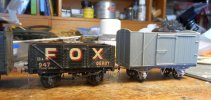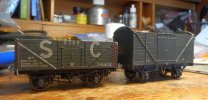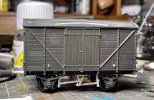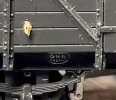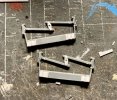AJC
Western Thunderer
Hi Adam,
I think it might be a Ford 8, also known as the Model Y, if it had a V8, it might be a bit of a handful!
Mark
You're not wrong (my ignorance of automobiles is more or less total). Thanks for pointing that out!
Adam
Hi Adam,
I think it might be a Ford 8, also known as the Model Y, if it had a V8, it might be a bit of a handful!
Mark
The little Ford is eagerly awaited and much appreciated, it joins a Ford 7V flatbed on a truly tiny layout.In cruel close up (and with a little dust), a Ford [not aV]8, nearly finished (for someone else). Flush glazing makes a huge difference but drove me scatty.
Adam
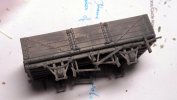
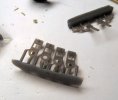
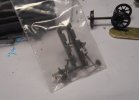
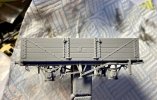
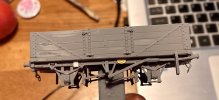
Among the innovative features are 3D printed springing units which work very well, on trials. The principle is exactly that used in Bill's etched W irons: a bearing carrier slides inside the W-iron on a guitar wire spring. The only difference is that the spring (an 'L' shape) is mounted into a hole and a bracket rather than fixed the the bearing carrier which has a groove in it which rests on the spring.
The 'springing' sounds interesting Adam - are you able to pop up a photo of the underside to show this?
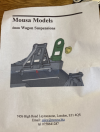
I suspect that might alter the spring's springing qualities - ever so slightly, but possibly enough to cause problems.I might use a spot of epoxy to retain the spring at the 'leg' end.
Adam
I suspect that might alter the spring's springing qualities - ever so slightly, but possibly enough to cause problems.
Interesting system.
striations
That’s the word of the day so far

Quite simpleReally easy to set up, though I might use a spot of epoxy to retain the spring at the 'leg' end.
That's probably true. I was thinking, as usual, in terms of "would Dave Bradwell allow it?"I suspect that with EM wheel standards this won't be remotely problematic, but it might in P4?

That's probably true. I was thinking, as usual, in terms of "would Dave Bradwell allow it?"
